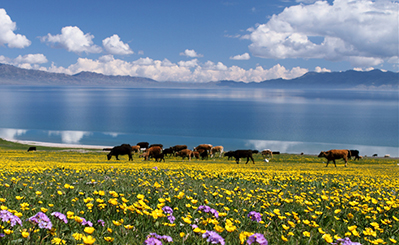Xinjiang's ice and snow economy shines as 9th Asian Winter Games begins

Visitors experience ice and snow leisure activities in Bayingol Mongol autonomous prefecture of Xinjiang Uygur autonomous region during the 2025 Spring Festival holiday. [Photo/IC]
The 9th Asian Winter Games Harbin 2025 officially began on February 7 in Harbin, Heilongjiang province, with over 1,200 athletes from 34 Asian countries and regions participating, marking a record high for both the number of participating delegations and athletes.
Franco Ascani, president of the Federation Internationale Cinema Television Sportifs, believes the Asian Winter Games will significantly boost the ice and snow economy, including that of Harbin.

People enjoy ice biking in Tacheng prefecture, Xinjiang Uygur autonomous region, during the 2025 Spring Festival holiday. [Photo/IC]
Similarly, Xinjiang Uygur autonomous region, a place rich in ice and snow resources, has been making remarkable progress in developing its own ice and snow economy, with winter tourism being a key component. In the 2023-2024 winter season, Xinjiang's ice and snow tourism revenue reached 106.7 billion yuan (about $14.64 billion), a 263.74 percent increase on the previous year. This figure is expected to be surpassed in the current winter season.
The region is emerging as a prime destination for skiing, thanks to its excellent natural conditions, such as snow-capped mountains, deserts and frozen lakes, as well as its long snow season. Xinjiang is home to 101 ski resorts, including five national-level ski tourism resorts, the highest number in China.

During the 2025 Spring Festival holiday, people enjoy skating in Korla, Northwest China's Xinjiang Uygur autonomous region. [Photo/IC]
Xinjiang has been actively promoting ice and snow tourism by developing a network of routes, organizing various winter events and transforming its "ice and snow resources" into a "flourishing economy". Last year, the region hosted over 3,500 ice and snow activities, attracting 3.2 million visitors.
Moving forward, Xinjiang plans to enhance its industry chain and expand its business entities to drive high-quality development in the ice and snow industry, aiming for a total industrial output value of 200 billion yuan by 2030.
 Attractions
Attractions Dining
Dining Culture
Culture